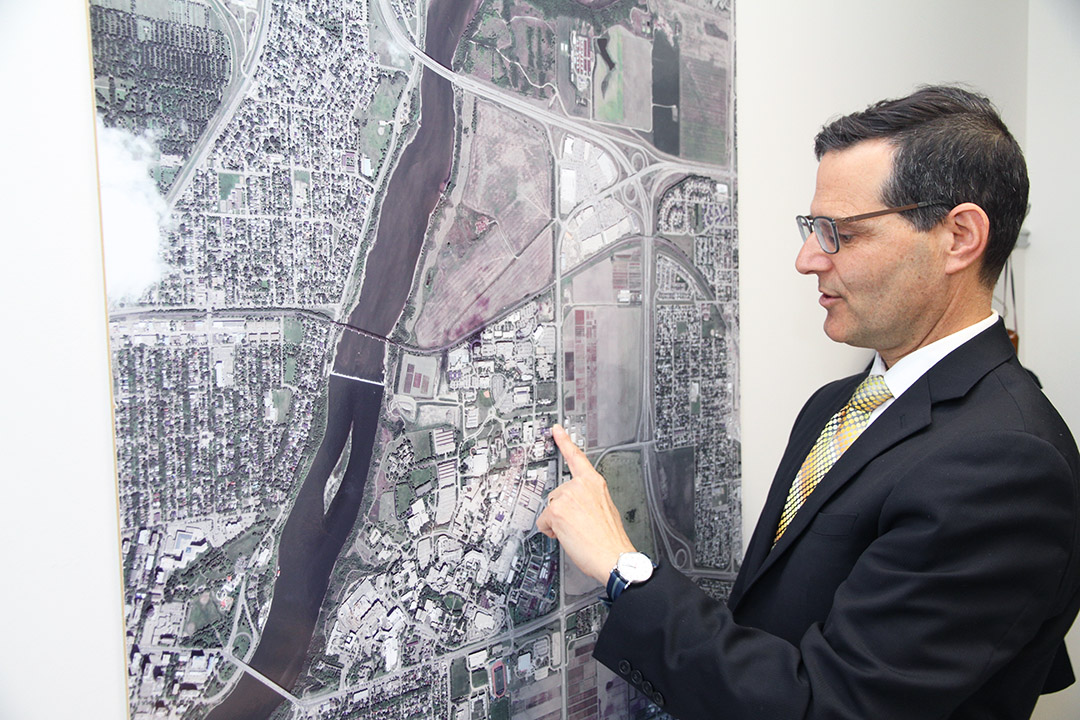
City and university explore development opportunities
The University of Saskatchewan (USask) is exploring ways to help the City of Saskatoon set the path for future growth and development.
By Jody GressCity officials, in partnership with the university, recently completed the first in a series of community engagement sessions to share more information about the development of the university’s endowment land. On Campus News caught up with James Cook, manager of Campus Planning and Real Estate, to discuss the university’s plan for the nearly 1,000 acres of land that surrounds the main campus in the heart of Saskatoon.
OCN: What led to the university exploring opportunities for future land development?
JC: In 2007, we took on a project called Vision 2057 to study the university’s 1,865-acre urban land holdings. That process included wide consultation with members of the university and the community. A set of principles for future land development was established and nearly 1,000 acres of the urban land was designated as endowment land, with the rest being preserved for core campus and academic research use.
OCN: When you refer to endowment land, what does that mean?
JC: Endowment land is land that was purchased at the time of the university’s inception and through Vision 2057 was categorized as land that has the potential to provide new revenue streams to support the core mission of the university.
OCN: Do we know what the land will be used for?
JC: The University of Saskatchewan and the City of Saskatoon recently entered into a memorandum of understanding (MOU) to explore potential collaboration on a number of issues, including strategic infill on university endowment lands. The development of the University Sector Plan is the first step in the development of community plans for those areas.
OCN: Will the development of endowment land impact current research activities in plots located near the main campus?
JC: When Vision 2057 was approved we began the process of relocating some agriculture activities to more suitable rural locations. An example of this is the purchase of rural lands that were used to relocate the university feedlot from its location north of College Drive to the recently opened Livestock and Forage Centre of Excellence south of Clavet. We also transitioned some plant science research activities to land designated for core agriculture research located between College Drive and Preston Crossing.
OCN: Will any of the university land be sold as part of this development plan?
JC: No, the university’s intent is to lease the land rather than sell it.
OCN: What will the potential revenue from developing the land be used for?
JC: There is nothing identified at this point. Any revenue generated from land development would go towards supporting the strategic priorities of the university.
OCN: Will members of the university and the community have the opportunity to weigh in on the type of development that will occur?
JC: The city held the first in a series of Come and Grow events, where members of the community could view the plan and provide input on what kinds of amenities they would like to see within these areas. Details about future events is available on the City of Saskatoon’s website.
OCN: Is there a timeline for the development of the university land?
JC: The city will continue with public consultation and the completion of the sector plan by the end of 2019, which will lead to the next phase of community planning.
Article re-posted on .
View original article.

